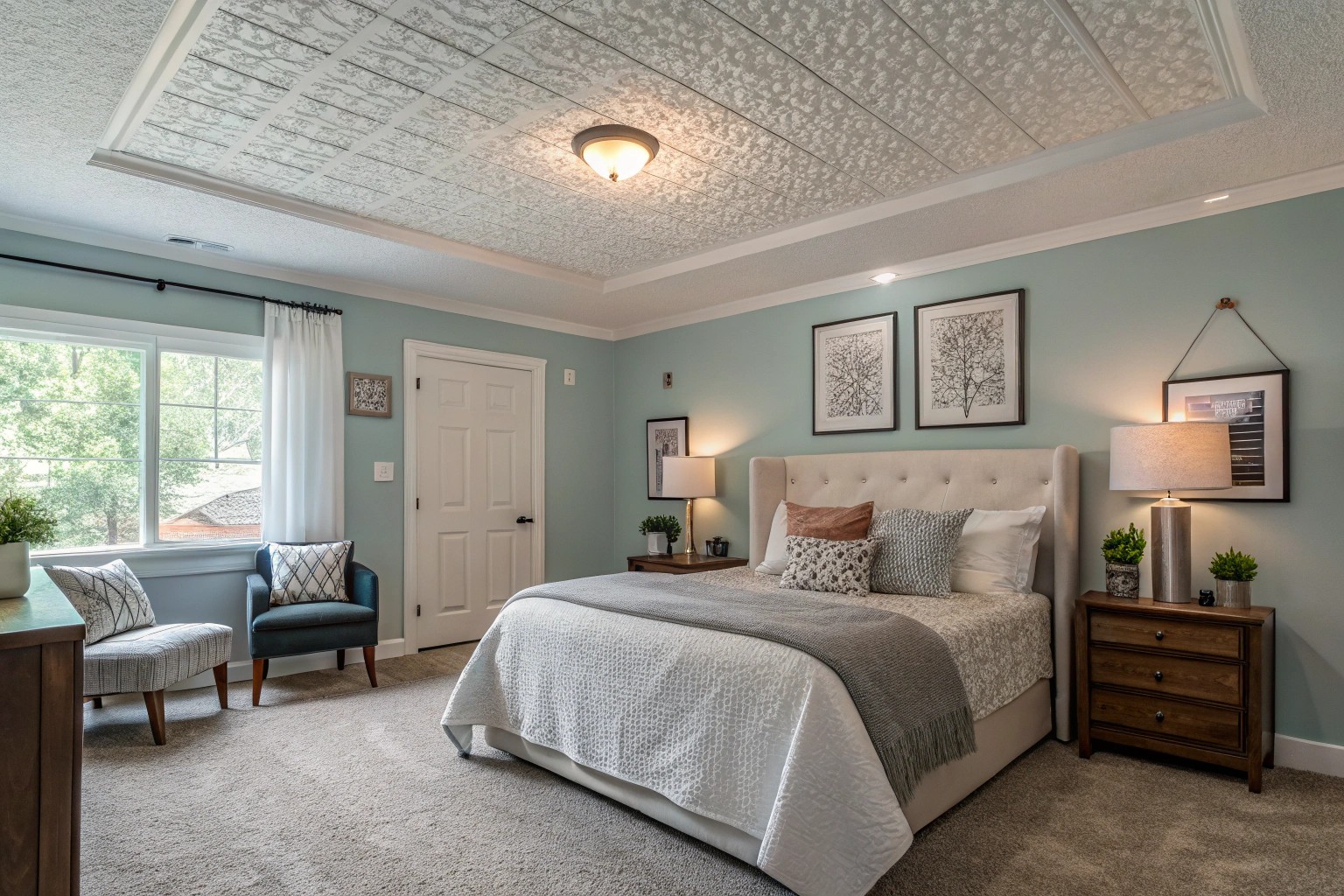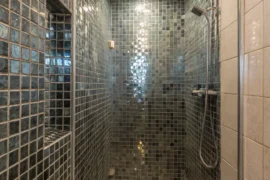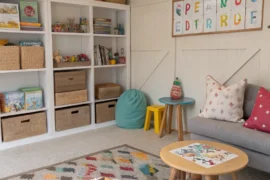Popcorn ceilings—those bumpy, textured surfaces that were once the height of residential fashion—now often top the “must-remove” list for many homeowners. But what if removal isn’t an option? Whether due to asbestos concerns, rental restrictions, budget limitations, or simply time constraints, many Americans find themselves staring up at a ceiling they didn’t choose and cannot change. Having worked with countless clients facing this exact dilemma, I’ve discovered that making peace with popcorn ceilings isn’t just possible—it can lead to surprisingly beautiful design solutions.
Understanding What You’re Working With
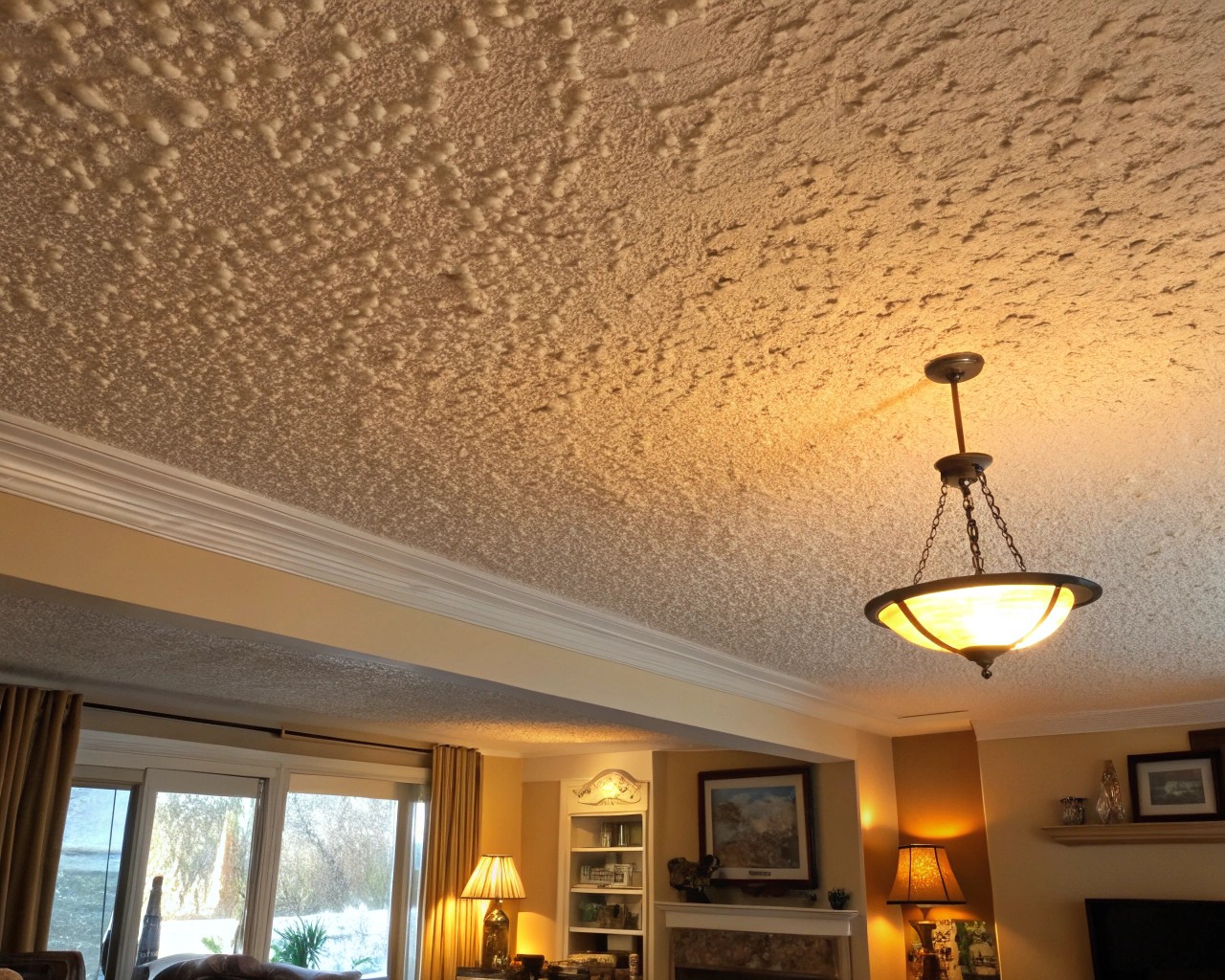
Popcorn ceilings, also known as acoustic or cottage cheese ceilings, became popular during the post-war housing boom. They were a practical solution that:
- Hid imperfections in ceiling construction
- Absorbed sound and reduced echoes
- Reduced construction time and costs
- Eliminated the need for multiple coats of ceiling finishing
The texture was created by spraying a mixture of materials that, prior to 1978, often contained asbestos. This is why testing is crucial for older homes before any modifications are attempted.
Types of Popcorn Textures
Not all popcorn ceilings are created equal. In my years of design work, I’ve encountered various textures that each present unique challenges:
| Texture Type | Appearance | Common Era | Design Considerations |
|---|---|---|---|
| Heavy Popcorn | Large, pronounced bumps | 1950s-1970s | Most difficult to disguise, catches more dust |
| Medium Popcorn | Moderate texture | 1970s-1980s | Somewhat easier to work with, still noticeable |
| Light Stipple | Subtle texture | 1980s-1990s | Easier to work with, less visually intrusive |
| Painted Popcorn | Any texture with paint coating | Various | Paint can make texture more prominent if not done properly |
Mindset Shift: Design Within Constraints
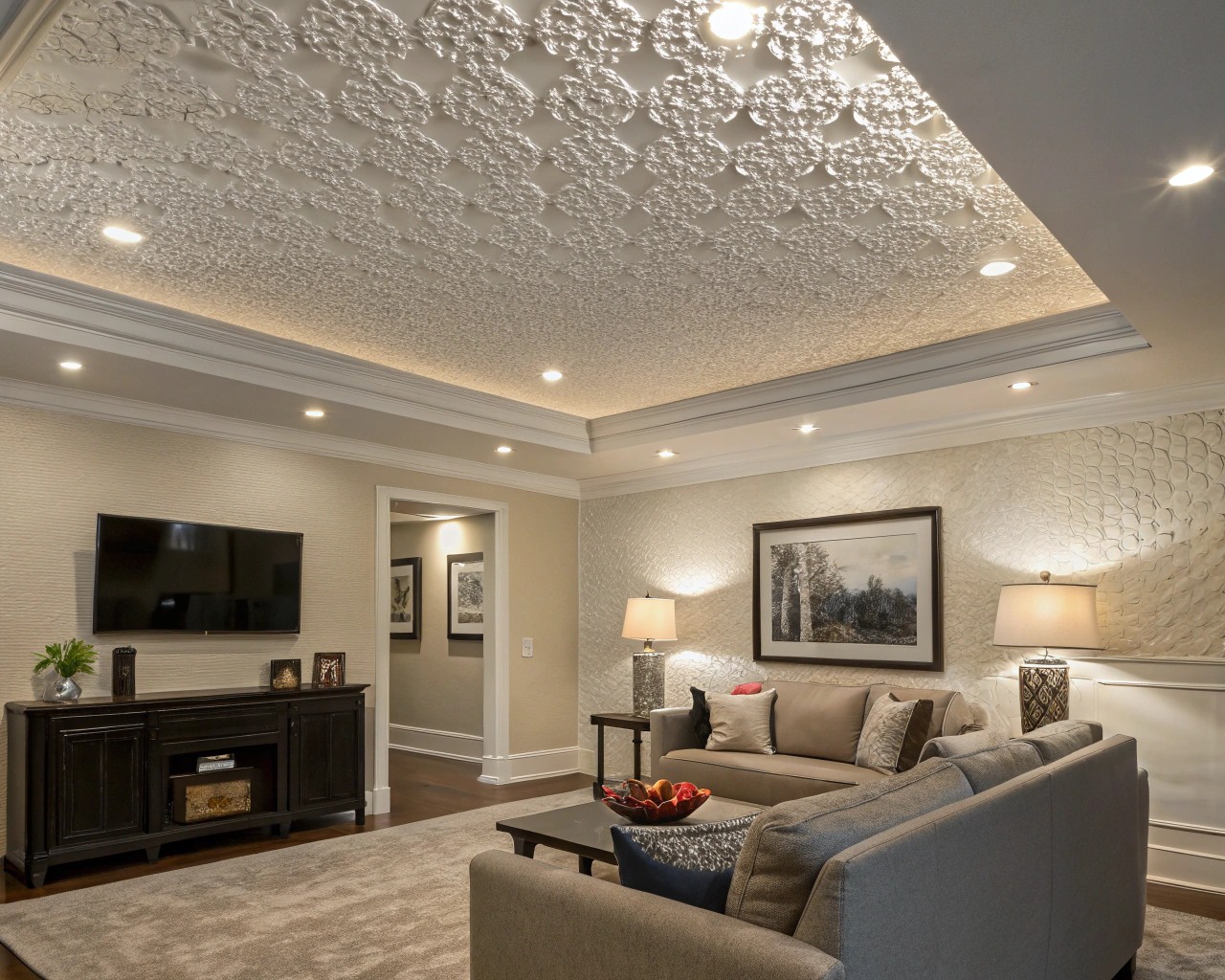
Before diving into practical solutions, we need to address the elephant in the room—or rather, on the ceiling. As a designer, I’ve learned that some of my most creative work happens within constraints, not in their absence.
Property solutions expert Jordan Fulmer suggests reframing the challenge: instead of viewing popcorn ceilings as a flaw, consider them a design parameter. He notes that, similar to constraints like small rooms or awkward layouts, these textured ceilings become just another element to integrate thoughtfully into the overall design scheme.
Solution 1: Strategic Painting
The simplest approach to refreshing a popcorn ceiling is through thoughtful painting. When a client in Austin was reluctant to tackle a complete removal, we opted for a strategic paint approach that transformed their space.
Best Practices for Painting Popcorn Ceilings:
- Test for asbestos first if your home predates 1980
- Use ceiling-specific paint with a flat finish to minimize texture visibility
- Select a sprayer rather than a roller when possible to avoid disturbing the texture
- Apply primer before painting, especially if the ceiling has yellowed with age
- Consider color carefully – white remains the most forgiving option for textured ceilings
I recently worked with a family whose 1970s ranch home featured popcorn ceilings throughout. Rather than disturb potentially harmful materials, we chose a soft, slightly warm white that reflected light beautifully and visually receded, allowing other design elements to take center stage.
Solution 2: Visual Distraction Techniques

One of the most effective strategies I’ve employed is simply drawing attention elsewhere. You’d be surprised how quickly people forget about a textured ceiling when the rest of the space captivates.
Attention-Directing Elements:
- Statement furniture pieces that anchor the eye at mid-level
- Gallery walls that command attention
- Distinctive flooring that draws eyes downward
- Pendant lighting that creates visual interest between ceiling and floor
- Bold textiles that add pattern and color to the space
A bachelor client with a rental apartment feared his popcorn ceiling would forever make his space feel dated. We installed a large, statement book shelf along one wall, added strategically placed art, and incorporated a richly patterned area rug. The result? Not a single guest mentioned the ceiling at his housewarming party.
Solution 3: Partial Coverage Solutions
If you can’t eliminate the popcorn texture entirely, consider partial coverage options that frame or segment the ceiling.
Effective Partial Coverings:
- Crown molding to create a visual border and add architectural interest
- Ceiling medallions around light fixtures to create focal points
- Decorative beams to section the ceiling into smaller visual areas
- Picture frame molding on the ceiling to add structure and formality
“I’ve found that adding substantial crown molding can transform a room with a popcorn ceiling,” shares Albie, a designer who has worked extensively with textured ceilings. “The molding draws the eye to the perimeter rather than the ceiling surface itself.”
Solution 4: Full Coverage Options
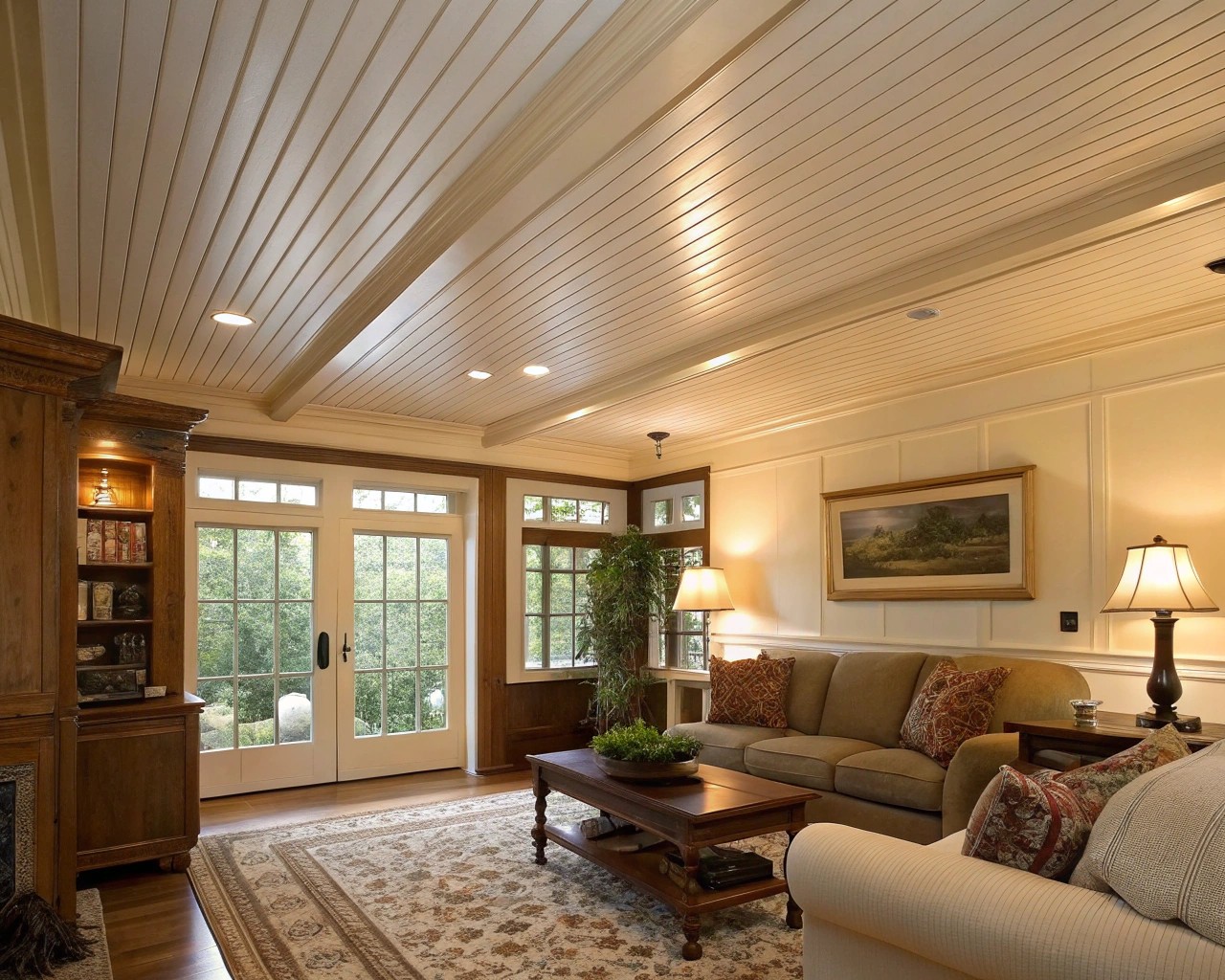
For those seeking more dramatic solutions, several full-coverage options effectively conceal popcorn texture without removal.
Popular Covering Materials:
| Material | Cost Range | DIY Difficulty | Appearance | Installation Notes |
|---|---|---|---|---|
| Beadboard Panels | $27-40 per 4×8 sheet | Moderate | Classic, cottage | Requires secure mounting to ceiling joists |
| Pressed Tin Tiles | $15-25 per sq ft | Moderate to Difficult | Vintage, ornate | Can be adhesive-mounted or nailed |
| Wood Planks | $3-10 per sq ft | Moderate | Rustic, warm | Creates slight height reduction |
| Fabric Treatments | $10-30 per yard | Easy to Moderate | Soft, textural | Best for bedrooms and low-traffic areas |
| Track System | $5-15 per sq ft | Easy | Modern, clean | Minimal height reduction |
In a recent renovation of a 1960s home, we used beadboard panels to cover the popcorn ceiling in the family room. The client remarked, “It’s amazing how such a simple change completely transformed the character of the space. It feels more intentional now.”
Solution 5: Lighting Magic
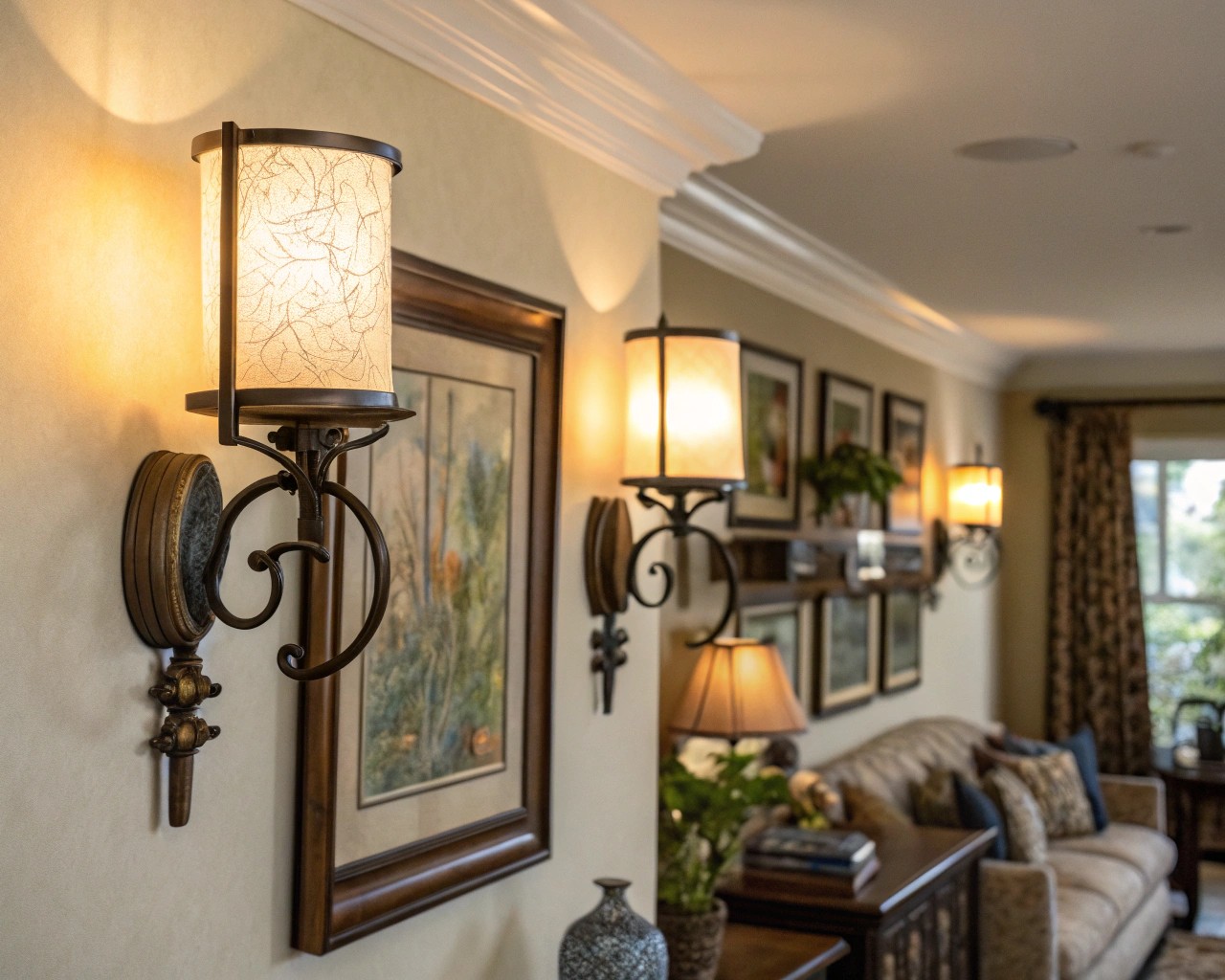
The way light interacts with texture can either minimize or accentuate it. In my experience, strategic lighting choices can make a tremendous difference in how popcorn ceilings are perceived.
Lighting Do’s and Don’ts:
Do:
- Use diffused, ambient lighting that distributes light evenly
- Install recessed lighting that minimizes shadows
- Incorporate wall sconces and table lamps to create mid-level lighting
- Consider LED strip lighting around the perimeter to wash the walls
Don’t:
- Install harsh directional lights that cast shadows on the texture
- Use pendant lights that hang too close to the ceiling
- Select fixtures with upward-facing bulbs that highlight the texture
- Forget how natural light affects ceiling appearance throughout the day
When working with a client’s mid-century home, we replaced dated ceiling fixtures with recessed lighting and added elegant wall sconces. The transformation was remarkable—the ceiling virtually disappeared from notice as the eye was drawn to the beautifully lit walls and art instead.
Solution 6: Room-Specific Strategies

Different rooms call for different approaches. What works in a living room may not be ideal for a bedroom or kitchen.
Living Areas:
- Focus on statement furniture and eye-level interest
- Consider partial wood or beadboard treatments
- Use area rugs to draw attention downward
Bedrooms:
- Install a canopy bed or dramatic headboard to direct gaze
- Use hanging textiles or a pendant light over the bed as a focal point
- Consider ceiling-mounted curtain tracks with sheer fabric panels
Kitchens:
- Install statement lighting over islands or dining areas
- Add open shelving or upper cabinets that draw attention to wall areas
- Consider painting ceiling the same color as walls to create visual continuity
One client with a popcorn-ceilinged kitchen was amazed at how installing pendant lights over her island and adding a colorful backsplash completely redirected attention away from the ceiling. “I honestly don’t even notice it anymore,” she confided.
Solution 7: Color Psychology and Optical Illusions
Understanding how color and pattern affect perception can help minimize the visual impact of texture.
Color Strategies:
- Paint the ceiling the same color as the walls to blur the boundary between surfaces
- Use cooler, lighter colors to make the ceiling recede visually
- Apply a slight gloss to ceiling paint in darker rooms to enhance light reflection
- Consider a subtle color rather than stark white to add intentionality
We recently worked with a client who was hesitant to paint her popcorn ceiling anything but white. After careful consideration, we selected a very pale blue that coordinated with her coastal-inspired decor. The result was stunning—the texture seemed to fade into the background while adding subtle visual interest.
Maintenance and Care
Popcorn ceilings do require specific care approaches to keep them looking their best.
Maintenance Tips:
- Dust regularly using a microfiber cloth on a long-handled duster
- Address stains immediately with a spot-cleaning approach
- Be gentle when cleaning to avoid dislodging texture
- Consider professional cleaning for severely discolored ceilings
- Repair damaged areas by matching texture with commercial products
Embracing the Vintage Charm
Interestingly, there’s a small but growing trend of design nostalgia that appreciates the vintage charm of popcorn ceilings. As with many design elements, what goes around often comes around.
Sally Matheny, who has researched popcorn ceiling trends, points out that while they might not align with current design preferences, these ceilings are markers of a specific period in American home building. She suggests there can be an inherent value and authenticity in preserving original features that reflect a home’s design history.

